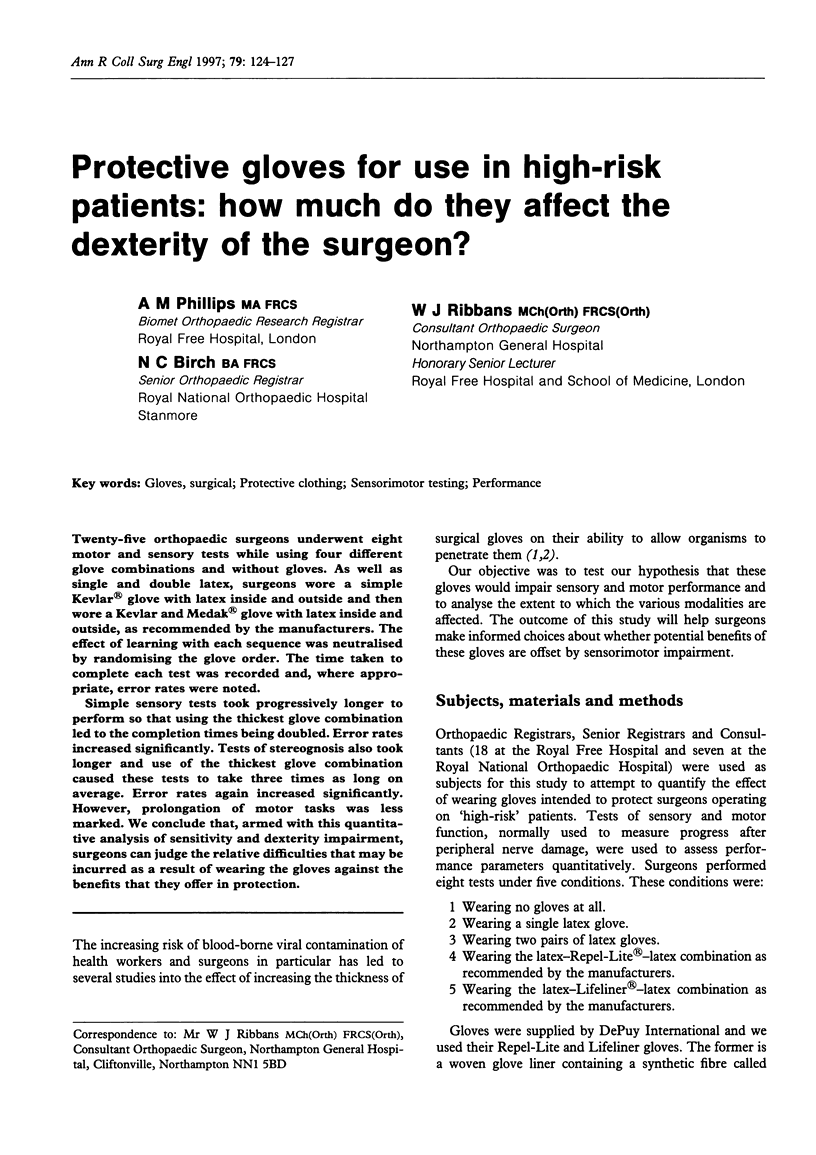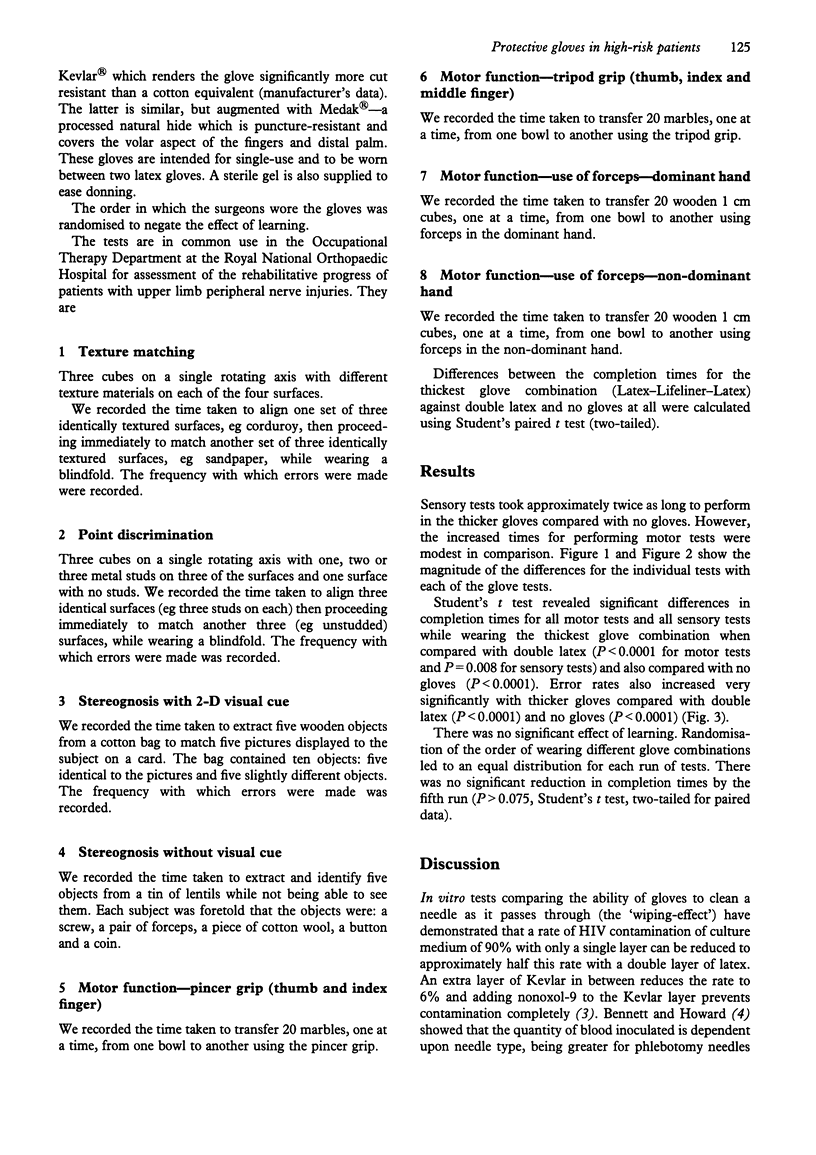Abstract
Twenty-five orthopaedic surgeons underwent eight motor and sensory tests while using four different glove combinations and without gloves. As well as single and double latex, surgeons wore a simple Kevlar glove with latex inside and outside and then wore a Kevlar and Medak glove with latex inside and outside, as recommended by the manufacturers. The effect of learning with each sequence was neutralised by randomising the glove order. The time taken to complete each test was recorded and, where appropriate, error rates were noted. Simple sensory tests took progressively longer to perform so that using the thickest glove combination led to the completion times being doubled. Error rates increased significantly. Tests of stereognosis also took longer and use of the thickest glove combination caused these tests to take three times as long on average. Error rates again increased significantly. However, prolongation of motor tasks was less marked. We conclude that, armed with this quantitative analysis of sensitivity and dexterity impairment, surgeons can judge the relative difficulties that may be incurred as a result of wearing the gloves against the benefits that they offer in protection.
Full text
PDF



Selected References
These references are in PubMed. This may not be the complete list of references from this article.
- Bennett N. T., Howard R. J. Quantity of blood inoculated in a needlestick injury from suture needles. J Am Coll Surg. 1994 Feb;178(2):107–110. [PubMed] [Google Scholar]
- Chiu K. Y., Fung B., Lau S. K., Ng K. H., Chow S. P. The use of double latex gloves during hip fracture operations. J Orthop Trauma. 1993;7(4):354–356. [PubMed] [Google Scholar]
- Johnson G. K., Nolan T., Wuh H. C., Robinson W. S. Efficacy of glove combinations in reducing cell culture infection after glove puncture with needles contaminated with human immunodeficiency virus type 1. Infect Control Hosp Epidemiol. 1991 Jul;12(7):435–438. doi: 10.1086/646374. [DOI] [PubMed] [Google Scholar]
- Nelson J. B., Mital A. An ergonomic evaluation of dexterity and tactility with increase in examination/surgical glove thickness. Ergonomics. 1995 Apr;38(4):723–733. doi: 10.1080/00140139508925144. [DOI] [PubMed] [Google Scholar]
- Sebold E. J., Jordan L. R. Intraoperative glove perforation. A comparative analysis. Clin Orthop Relat Res. 1993 Dec;(297):242–244. [PubMed] [Google Scholar]


